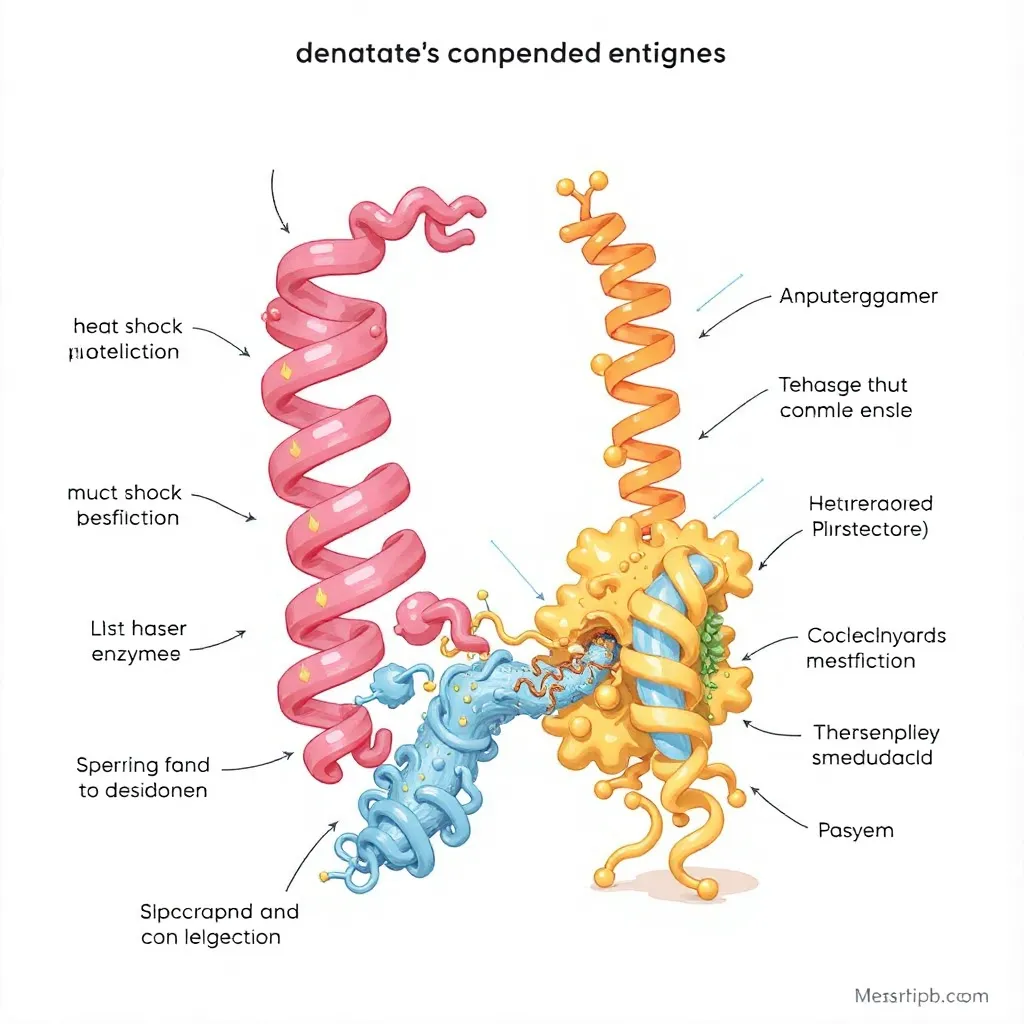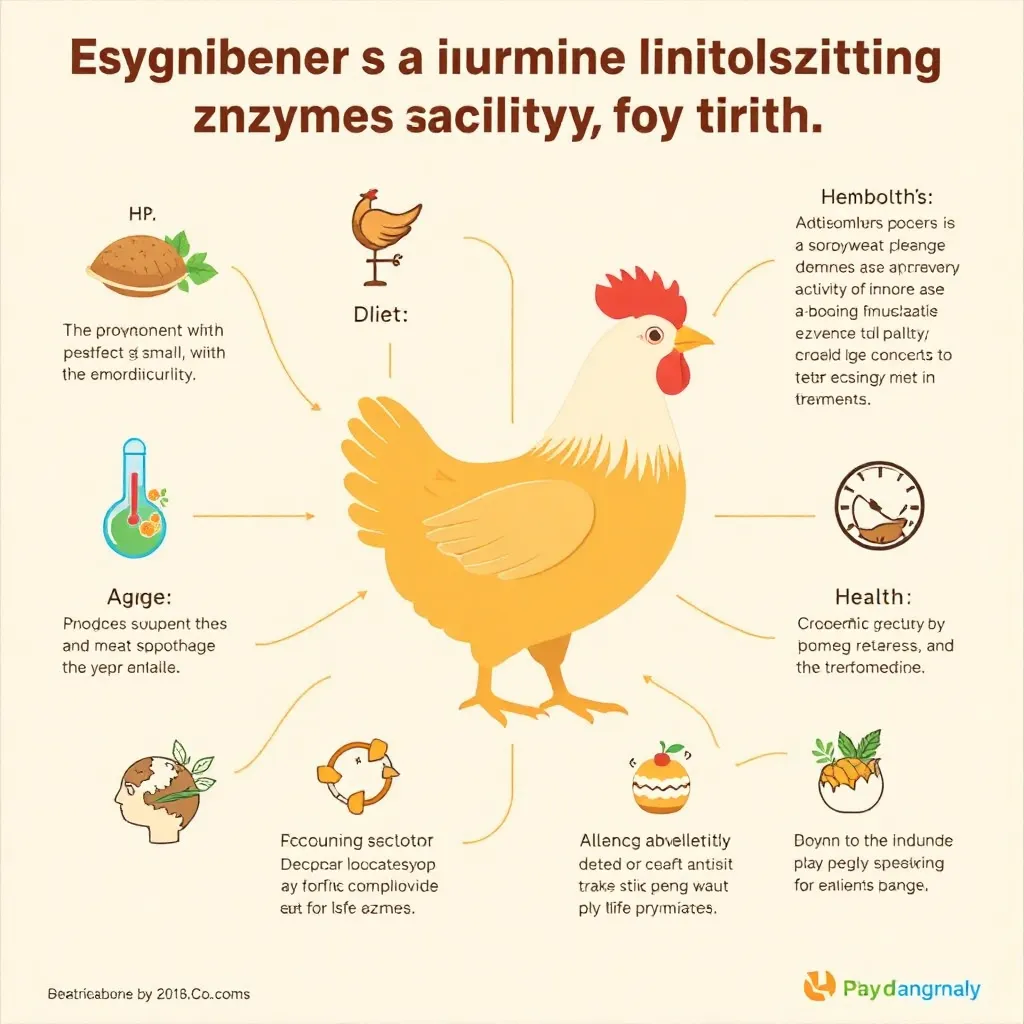Can enzymes work in variable conditions such as temperature and pH in the poultry body? how
Can Enzymes Function in the Variable Conditions of a Poultry Body?
Poultry health and productivity are intricately linked to the optimal functioning of enzymes within their bodies. Enzymes are biological catalysts that accelerate biochemical reactions, playing crucial roles in digestion, metabolism, and immune responses. However, enzyme activity is highly sensitive to environmental conditions, particularly temperature and pH. This article explores how enzymes in poultry cope with the variable temperature and pH conditions encountered within their bodies.

The Impact of Temperature on Enzyme Activity in Poultry
Temperature significantly influences enzyme activity. Each enzyme has an optimal temperature range where it functions most efficiently. Beyond this range, activity diminishes. In poultry, body temperature is relatively constant (around 41°C), providing a stable environment for many enzymes. However, fluctuations can occur due to external factors like heat stress or cold exposure.
Heat stress, a common problem in poultry farming, can lead to a significant rise in body temperature. This can denature enzymes, altering their three-dimensional structure and rendering them inactive. Studies have shown that prolonged heat stress reduces the activity of antioxidant enzymes, compromising the bird’s ability to combat oxidative stress (as evidenced by research highlighted in “Abiotic stressors in poultry production: A comprehensive review”). Conversely, extremely low temperatures can slow down enzyme activity, impacting metabolic processes. The research on “Effects of the early incubation temperature on the muscle physiology…” highlights the importance of temperature regulation during embryonic development, which directly affects the later enzyme functionality.

pH and Enzyme Function in the Poultry Digestive System
The pH environment also critically affects enzyme activity. The poultry digestive tract exhibits a pH gradient, ranging from the acidic stomach (pH 2-4) to the more alkaline small intestine (pH 6-8). Different enzymes are adapted to specific pH ranges. For example, pepsin, a crucial enzyme for protein digestion in the stomach, functions optimally at a low pH, whereas pancreatic enzymes like trypsin and chymotrypsin, active in the small intestine, prefer a more neutral or slightly alkaline pH.
The study “Comparison of the Characteristics of Small Intestinal Fluid from…” investigates the use of digestive enzymes to simulate in vivo digestion, demonstrating the importance of pH in accurate nutritional assessments. The use of organic acids in poultry feed, as discussed in “‘Applications of Organic Acids in Poultry Production: An Updated and…'”, can influence the pH environment and consequently affect bacterial enzyme activity, impacting gut health.

Enzyme Adaptation and Regulation
Poultry have evolved mechanisms to maintain enzyme activity despite environmental fluctuations. These include:
- Heat Shock Proteins (HSPs): These proteins act as molecular chaperones, assisting in the refolding of denatured enzymes during heat stress. The review article “Heat shock proteins as a key defense mechanism in poultry…” emphasizes their protective role.
- Enzyme Isozymes: Many enzymes exist in multiple forms (isozymes) with slightly different optimal temperatures or pH ranges. This allows for some degree of flexibility in response to environmental changes.
- Enzyme Synthesis and Degradation: The rate of enzyme synthesis and degradation is regulated to match the body’s needs. During heat stress, the production of some enzymes might increase while others decrease to maintain homeostasis.

Influence of Diet and Other Factors
Dietary factors also significantly impact enzyme activity. The inclusion of exogenous enzymes in poultry feed, as explored in “Impact of long-term feeding a high level of Spirulina combined with…”, can supplement the bird’s own enzyme production, improving nutrient digestion, especially under stress conditions. The nutrient composition of the diet, including the presence of minerals and vitamins, can also influence enzyme activity.
Moreover, factors like age, breed, and health status of the bird affect enzyme activity. Young birds may have different enzyme profiles compared to adults, and certain breeds might exhibit variations in enzyme production. Disease or infections can also impair enzyme function.

Conclusion: Enzyme Resilience and Poultry Health
While enzyme activity is sensitive to temperature and pH changes, poultry possess various mechanisms to maintain enzyme function within a range of conditions. Understanding these mechanisms is crucial for optimizing poultry health and productivity. Factors like heat stress management, nutritional strategies, and breeding programs can all contribute to supporting optimal enzyme activity and, consequently, overall bird well-being. Further research into the intricate interplay between enzymes, environmental factors, and poultry health will continue to provide valuable insights into improving poultry farming practices.
#notes






